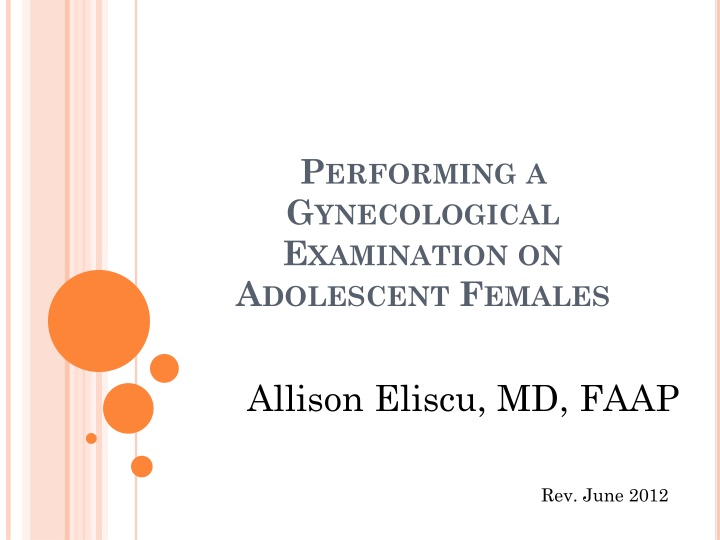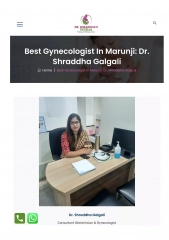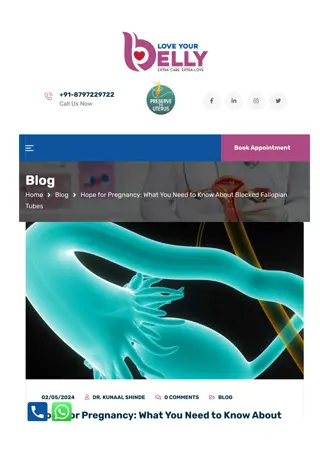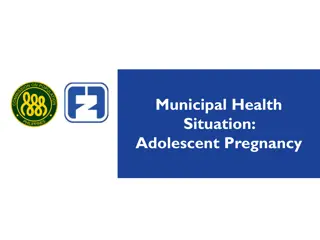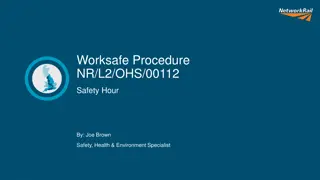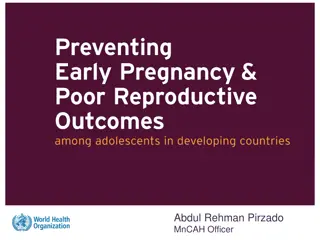Adolescent Gynecological Examination: Procedure and Testing Recommendations
This guide provides detailed information on performing a gynecological examination for adolescent females, including obtaining gynecological and sexual histories, preparation steps before the exam, testing recommendations, required equipment, and patient positioning. It emphasizes the importance of proper communication, patient comfort, and recommended testing intervals for procedures like Pap smears, gonorrhea, and chlamydia testing. The content aims to ensure a thorough and sensitive approach to adolescent gynecological care.
Download Presentation

Please find below an Image/Link to download the presentation.
The content on the website is provided AS IS for your information and personal use only. It may not be sold, licensed, or shared on other websites without obtaining consent from the author.If you encounter any issues during the download, it is possible that the publisher has removed the file from their server.
You are allowed to download the files provided on this website for personal or commercial use, subject to the condition that they are used lawfully. All files are the property of their respective owners.
The content on the website is provided AS IS for your information and personal use only. It may not be sold, licensed, or shared on other websites without obtaining consent from the author.
E N D
Presentation Transcript
PERFORMING A GYNECOLOGICAL EXAMINATION ON ADOLESCENT FEMALES Allison Eliscu, MD, FAAP Rev. June 2012
OBTAININGA GYN HISTORY Menstrual history Menarche Length of cycle (time between 1st day of bleeding from one cycle to next) Duration of bleeding Last menstrual period Presence of symptoms? Vaginal discharge? Dysuria? Vaginal itch? Odor? Prior gynecological exams
OBTAININGA SEXUAL HISTORY History of sexual activity Number of lifetime partners (male, female, both) Coitarche (age of sexual debut) Most recent sexual encounter Risk of pregnancy Determine if they need emergency contraception (for unprotected sex within last 5 days) History of contraception use Frequency of condom use History of STIs History of pregnancy
BEFORE STARTINGTHE EXAM Ask patient about expectations of exam Explain exam step-by-step Show her equipment and explain how it works Set up equipment and tests before starting Have chaperone present Explain that exam is easier if muscles are relaxed
GYN TESTING RECOMMENDATIONS Pap Smear Initial pap when 21 years old regardless of age of sexual debut (unless immunecompromised) Repeat testing every 2 years Gonorrhea and Chlamydia Testing Annual testing in sexually active adolescents More frequent if they are high risk, have vaginal symptoms or HIV+
EQUIPMENT Speculum (smallest size possible) Lubricant (Does NOT interfere with results) Light source Liquid thin prep container (for Pap smear) Spatula & cytobrush or broom to collect pap smear Gonorrhea/Chlamydia DNA probe container
PATIENT POSITIONING Gown patient with drape across lap Raise head of table slightly Extend stirrups (should be slightly outwards) Slide body down until buttocks hangs off table by 1-2 inches Ask if patient is comfortable in stirrups before proceeding Keep drape across unexamined areas Do not let drape block eye contact with patient
EXTERNAL GENITAL EXAMINATION Begin by touching the thigh with back of hand Check pubic hair region for lesions Check labia majora for lesions Spread labia majora to check labia minora and introitus for lesions or abnormalities Inspect perianal area for abnormalities
SPECULUM EXAMINATION Separate labia minora with fingers of nondominant hand Start with speculum in vertical position Hold bills closed Insert gradually with bills pointing posteriorly (downward position towards back) Once fully inserted, turn speculum horizontally Open bills slowly to allow cervix to pop into view Do NOT open bills until inserted completely If unable to find cervix, remove speculum and check position with finger, then retry inserting speculum
NORMAL ADOLESCENT CERVIX Ectropion transformation zone between immature (columnar) and mature (squamous) epithelium Ectropion is dark red and usually asymmetric Does not bleed when touched with Qtip (nonfriable) No treatment necessary Normal Ectropion
OBTAINING ENDOCERVICAL SPECIMENS Begin with either pap smear or STI testing Usually begin with test you are more concerned about Wipe cervix clean with cotton swab STI Testing Insert test-specific swab into cervical os Rotate swab for 10-30 seconds Insert swab immediately into collection tube, break swab at scoring, cap test tube
OBTAINING ENDOCERVICAL SPECIMENS Pap smear testing Insert spatula with long arm into cervix Rotate the spatula once Put spatula immediately into thinprep canister Rinse spatula vigorously 10 times in liquid Insert brush into cervix Rotate brush to turn only Put brush in liquid and rotate vigorously May use spatula to scrape extra cells off of brush May use broom instead of spatula/brush combination for pap smear Insert broom into cervix and rotate 5 times Vigorously rotate broom in liquid 10 times
BIMANUAL EXAMINATION Apply lubrication to 2nd and 3rd fingers of dominant hand Slowly introduce 1 or 2 fingers into vagina Assess Cervix Note size, shape, and consistency Move cervix side-to-side checking for cervical motion tenderness (cmt) Assess Uterus Place nondominant hand on lower midabdomen Slide vaginal fingers anterior to cervix, push fingers anteriorly Push downwards with abdominal hand Try to palpate uterus between 2 hands Assess size, consistency, shape, tenderness, and masses
BIMANUAL EXAMINATION Assess Ovaries Move vaginal fingers into right lateral fornix Place abdominal hand on right lower quadrant Sweep abdominal hand downwards and medially Try to palpate adnexal contents between fingers Assess for shape, masses, tenderness May or may not be palpable based on body habitus Move to left side and repeat Rectovaginal Exam Optimal palpation of posterior cul-de-sac and retroverted uterus
RECOMMENDED READING Potter J, Carrion-Gomez Y. Pelvic Exam. Retrieved from Reference Library: Virtual Patient 09 A woman at Midlife; The Carl J. Shapiro Institute for Education and Research at Harvard Medical School and Beth Israel Deaconess Medical Center website at: http://research.bidmc.harvard.edu/VPTutorials/midlif e/default.htm Carusi DA, Goldstein DP. The Gynecologic History and Physical Examination. UpToDate Online. Updated August 11, 2009. Cervical cytology screening. ACOG Practice Bulletin No. 109. American College of Obstetricians and Gynecologists. Obstet Gynecol 2009; 114:1409.
